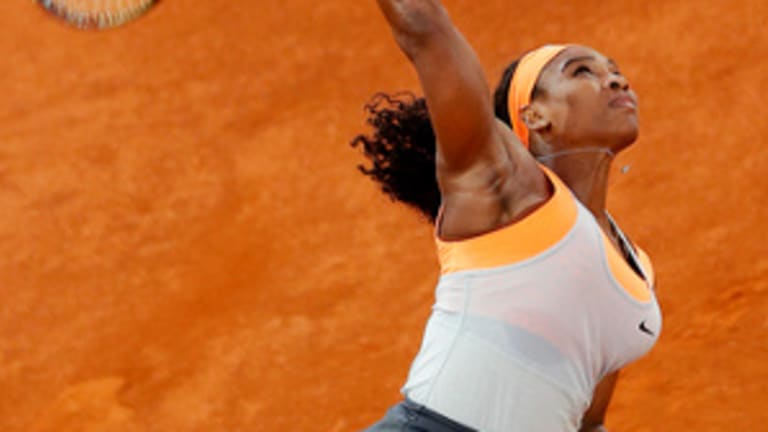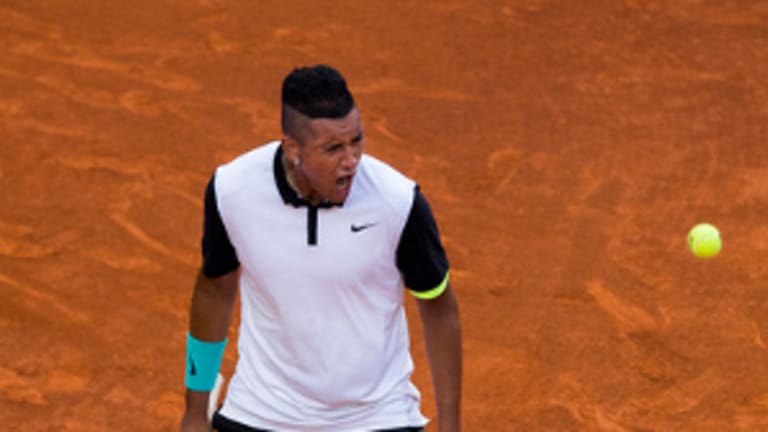While the women have provided at least an equal amount of drama this week, they still can’t get the respect of the Madrid organizers. On Tuesday night, a game featuring the soccer club Real Madrid was shown on the big screens inside center court while Carla Suarez Navarro—a Spanish native, to boot—was playing her match. On Wednesday, schedulers stuck with tradition at the Magic Box and put the two most famous female players in the world, Serena Williams and Maria Sharapova, on center court in the morning, effectively making them the opening acts for Rafael Nadal and Roger Federer.
If these two morning matches—a 6-2, 4-6, 7-5 win by Sharapova over Caroline Garcia and a 7-6 (5) 3-6, 7-6 (1) win by Serena over Victoria Azarenka—don’t warrant headliner status, I don’t know what does. Each was tense and compelling, and each was decided by a centimeter.
Sharapova and Azarenka both served at 6-5 in the third set, with the match on their racquets. Sharapova went up 40-15; double match point. Azarenka went up 40-0; triple match point. Garcia saved one of those points with a strong return; Serena saved two of those points, the first with a forehand winner, the second with a strong backhand return.
At 40-30, with one more chance to end it, Sharapova missed her first serve down the T. Garcia eagerly hopped back into position for her return, a shot she had been pounding all day. Sharapova went back down the T; the ball swerved toward the center line, and for a second, it looked as if it had missed. But it hadn’t. The ball caught the outside edge of the line; you could see the mark from afar, half on the line, half off. Garcia walked forward hopefully, but had to put her head down and accept the chair umpire’s confirmation: Game, set, match, Sharapova.
A little more than two hours later, Azarenka stood in the same position that Sharapova had, at 6-5, 40-30, with one more chance to pull off the upset and hand Serena her first loss of 2015. She hit a first serve toward the sideline, far from Serena’s reach. Unlike Sharapova’s serve, it looked at first as if it were going to land in, and Azarenka briefly believed she had won the match. But an out call came, which was confirmed by the chair umpire. Azarenka never recovered. She double-faulted, double-faulted again at deuce, and double-faulted a third time at break point. Williams went on to win the tiebreaker 7-1. After reaching triple match point, Azarenka lost 12 of the next 13.
“She almost hit an ace,” a relieved Serena said afterward. “She missed it by not even three centimeters. I thought, ‘Wow.’ This is definitely an escape.”
What a difference a centimeter or three can make: If Sharapova had sent her second serve at match point just a little wider, it’s quite possible that Garcia, who was playing exceptionally well this week, would have ended up winning.


